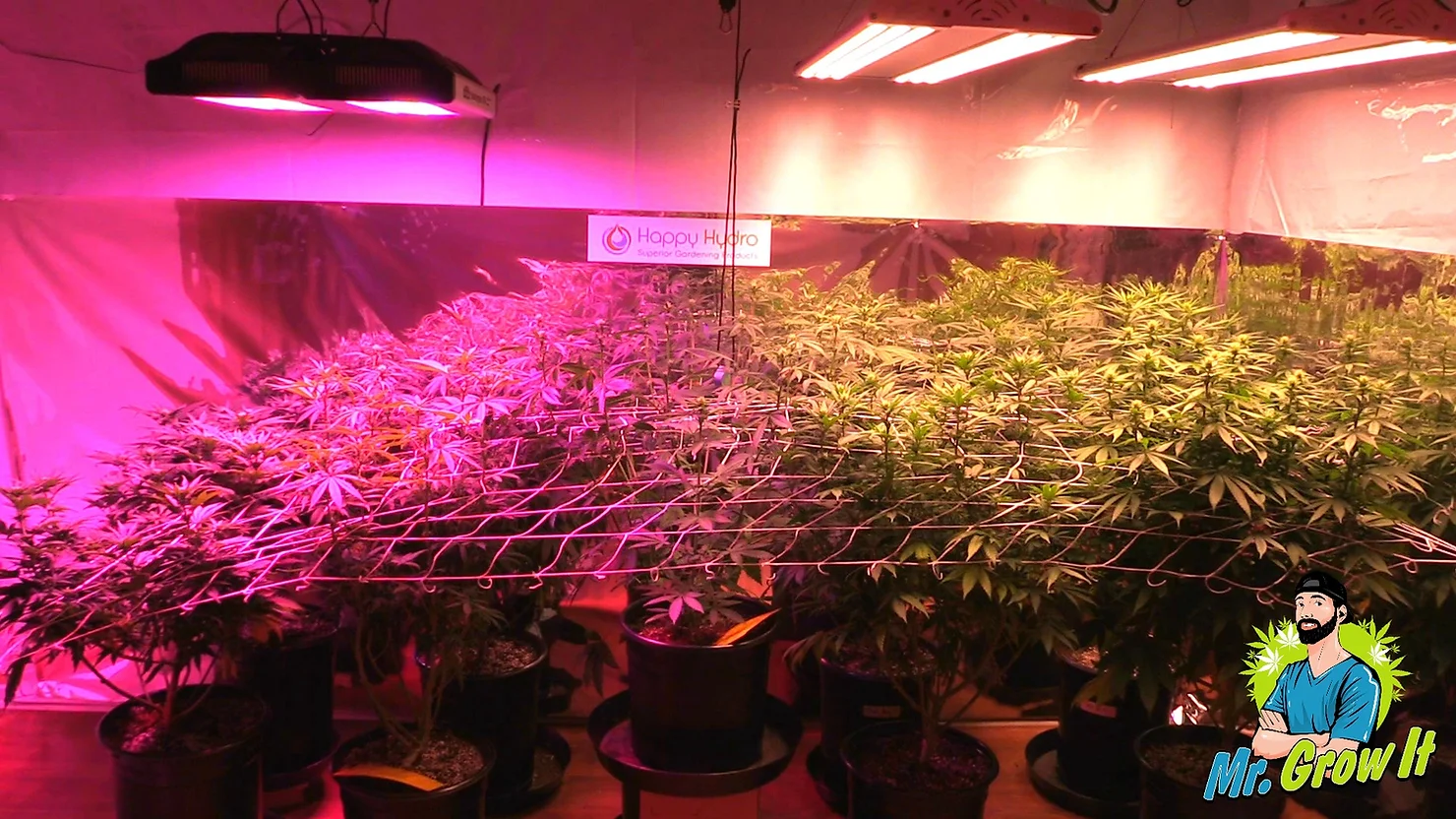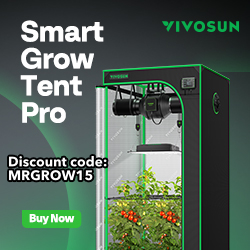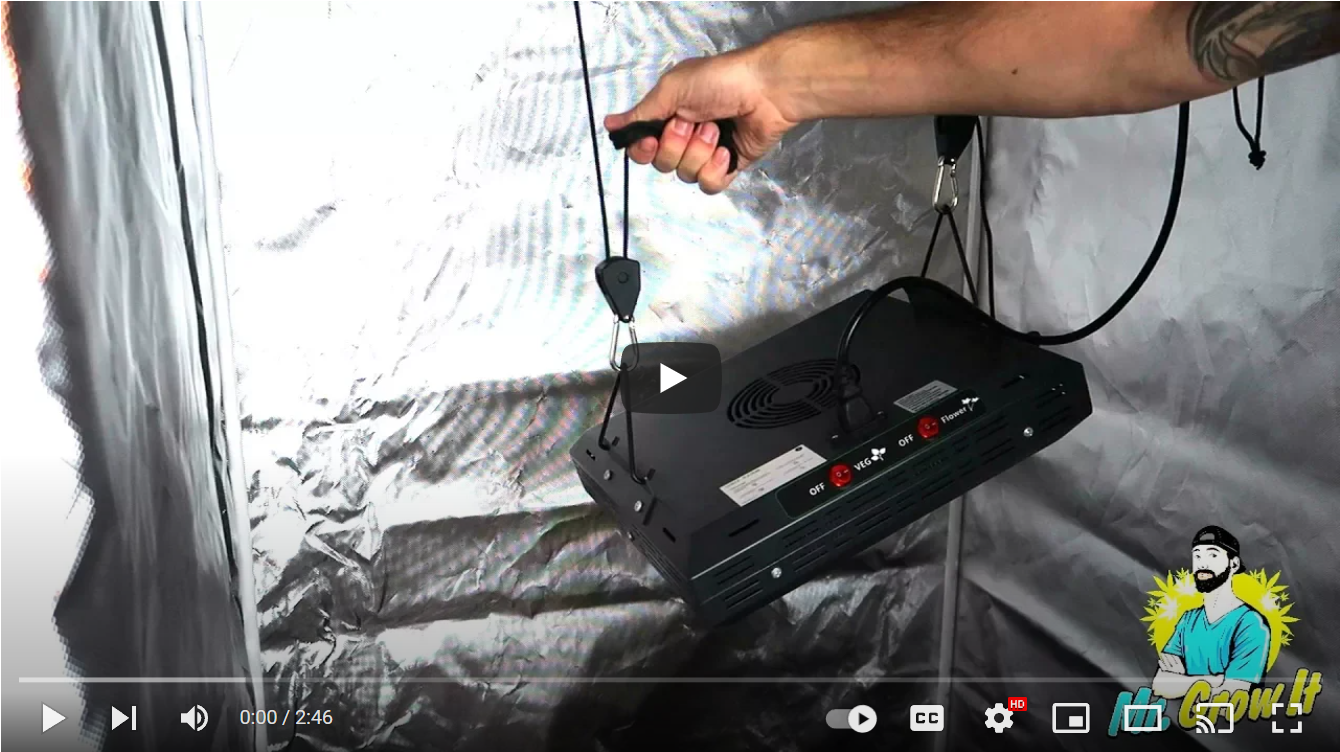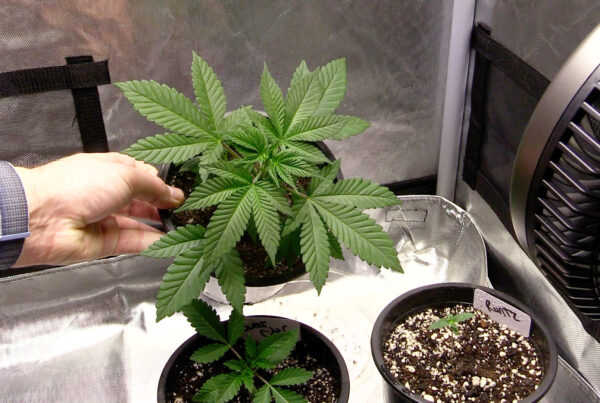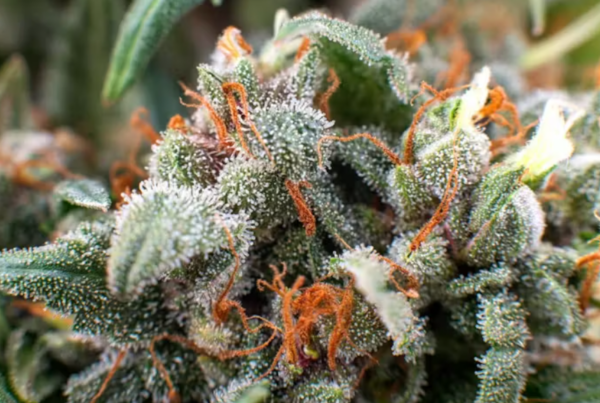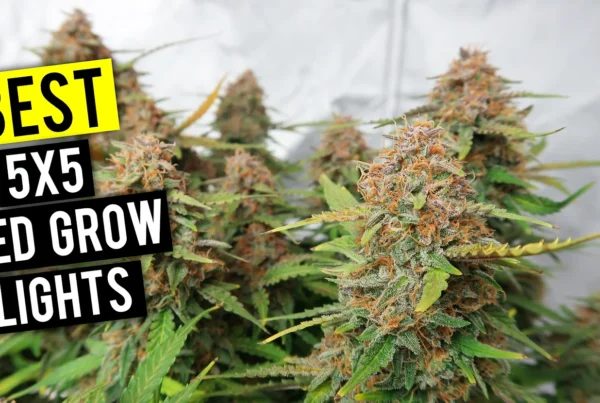If you are new to growing cannabis indoors, it may overwhelm you to see how many different LED grow lights are on the market today. Things such as light spectrum, wattage, and PAR output leave many to wonder what’s actually important. What should you really be looking for when buying a LED grow light and where do you begin? This article will go over the different things you should consider when shopping for a LED grow light.
Coverage Area & Light Distance
First, you need to know the size of the grow space that your plants will be growing in. Measure your grow space – length, width, and height. Knowing what size grow area you will be growing in is arguably the most important piece of information to know when shopping for a LED grow light. A LED grow light manufacturer will design their grow light for a specific coverage area. The most common coverage areas are: 2’x2’, 2’x4’, 3’x3’, 4’x4’, and 5’x5’. As you can see, the length and width are mentioned, but not the height. Hang tight. We will talk about the height of your grow space in a minute. Once you measure your grow space and know what area you need to your LED grow light to cover, you can narrow down your search results by filtering to show LED grow lights specific to your grow space.
Now what about the height of your grow space? That comes into play when we talk about light distance. Every grow light listing should state the coverage area as well as the recommended light distance. The light distance is the distance between the grow light and the top of your plants. Light distance is another thing you need to consider when buying a LED grow light. I’ve had several growers contact me asking for advice on plants that grew too close to their grow light – because they did not factor in light distance when buying their LED grow light. Let’s go over a quick example. Say your grow space is 4’x4’x6’ (L x W x H) and the recommended light distance on your LED grow light is 24”. So, 6’ (height of grow space) minus 2’ (light distance) equals 4’ tall plants? Right? Wrong! You should also consider the grow pot (which often takes up about 12” depending on the grow pot size) and the “lost distance” above the grow light which is taken up by the grow light hanging kit. Watch the video below to see two common types of grow light hanging methods:
Next, let’s talk about photosynthetic active radiation – abbreviated as PAR. PAR is the energy on the electromagnetic spectrum that photosynthetic organisms are able to use in the process of photosynthesis. To put things in simple words, PAR is the energy that plant’s use to grow. PAR is not a measurement like feet, meters, pounds, or kilos. The amount of PAR is instead stated in a few different ways: PPF, PPFD, PPF/J.
- PPF, or, photosynthetic photon flux is the total amount of PAR that is produced by a grow light each second. On grow light listings, you’ll see it as umol/s.
- PPFD, or, photosynthetic photon flux density is the amount of PAR that falls on a given surface each second. PPFD is a spot measurement of a specific location on your plant canopy and it’s measured in micromoles per square meter per second (umol/m2/s). Below is the PAR (measured in PPFD) needed for each stage of cannabis plant growth (when not supplementing with CO2):
- Seedlings, clones, mother plants: 200-400 PPFD
- Early to late Veg: 400-600 PPFD
- Flowering: 600-900 PPFD
- Photon efficacy refers to how efficient a grow light is at converting electrical energy into photons of PAR. On grow light listings, you’ll see it as umol/j. The higher this number is, the more efficient the grow light is at converting electrical energy into photons of PAR. In 2020, a photon efficacy of 2.0 umol/j or higher is considered very efficient.
Some of you may be wondering about the LED grow lights that produce over 900 PPFD. Will a PPFD higher than 900 produce bigger buds on your plant? The answer to that is yes – only if you run a high CO2 in your grow environment. CO2 is measured by PPM and the CO2 level outside is 400-500 PPM. Plants grow just fine with that amount of CO2. Some advanced growers will add CO2 into their grow room to get the CO2 PPM in the range of 1,000-1,500. Running a higher CO2 PPM like that will allow your plant to absorb more PAR. On the flip side, if you are not supplementing with CO2 and provide your plant with too much PAR, then your plant could encounter problems.
To learn more about PAR, watch the below video:
Spectrum
Light spectrum is another thing that should be considered when purchasing a LED grow light. The spectrum is essentially the colors of light that are emitted from the grow light. Different colors are made by photons at certain energy levels and are broken down into nanometers (nm). The differences in the nm of a photon, or its color, changes its potential effectiveness to drive photosynthesis. When growing cannabis, the plant uses more blue light when in the vegetation stage and then switches to use more red light when in the flowering stage. Although blue light and red light are needed most, cannabis plants also need other colors in the PAR range (400-700nm). UV (ultra violet) light and IR (infrared radiation) light are also needed – in smaller amounts. See the below images for grow light spectrum examples. If a grow light listing does not show the spectrum, ask the manufacturer. I’ve spoken with many new growers who have purchased a LED grow light without factoring in the spectrum, and unfortunately, it just about always led to poor plant growth.
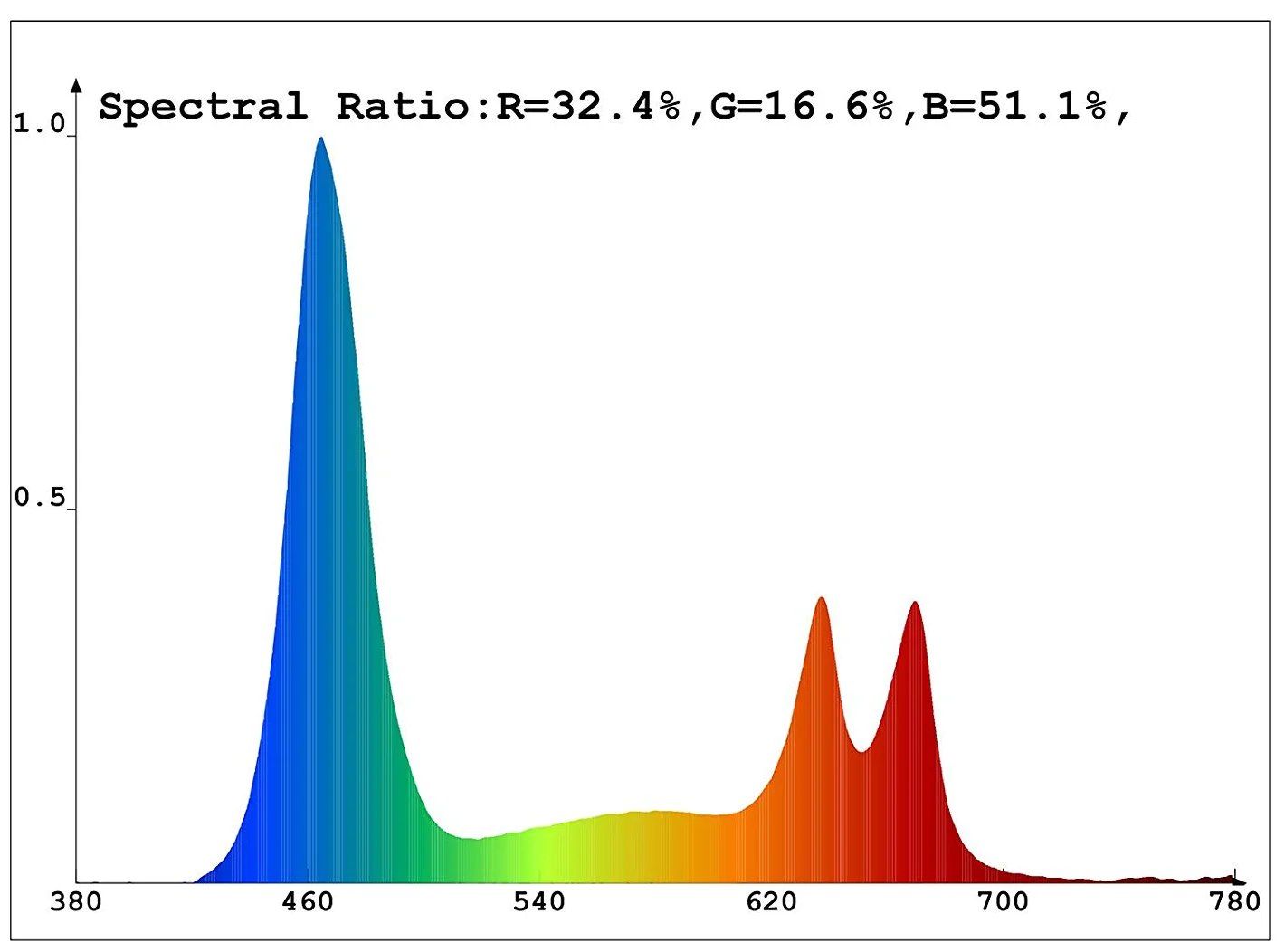
The above spectrum includes a lot of blue light which is best for cannabis plants in the vegetation stage.
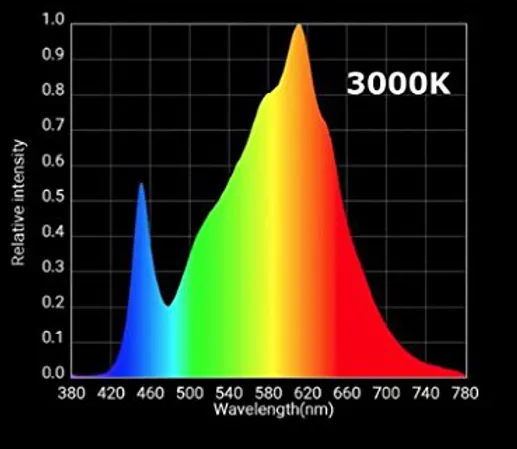
The above spectrum includes a lot of red light which is best for cannabis plants in the flowering stage.
Light Spread
Light spread, often referred to as uniformity, is another thing to consider when searching for your LED grow light. Don’t buy a LED grow light where the light is heavily focused in the middle of the grow space. That is how a lot of the older grow lights were designed. Ideally, the PAR coming from your grow light is evenly distributed onto your grow space. Think about it. If you have 8 branches on your plant, you wouldn’t want 4 of the branches getting 800 PAR and the other 4 branches getting 200 PAR. That makes no sense. You want all of the branches to get an even amount of PAR. This will theoretically result in even, healthy growth across the entire plant. Although, grow light technology isn’t yet to the point where fixtures are able to evenly distribute the light so that every square inch of the coverage area is receiving the same amount of PAR – but it has improved tremendously over the years. Light spread can be seen by looking at the grow light’s PAR chart. PAR charts show the amount of PAR at a specific spot. Remember PPFD? See below for two examples of PAR charts.
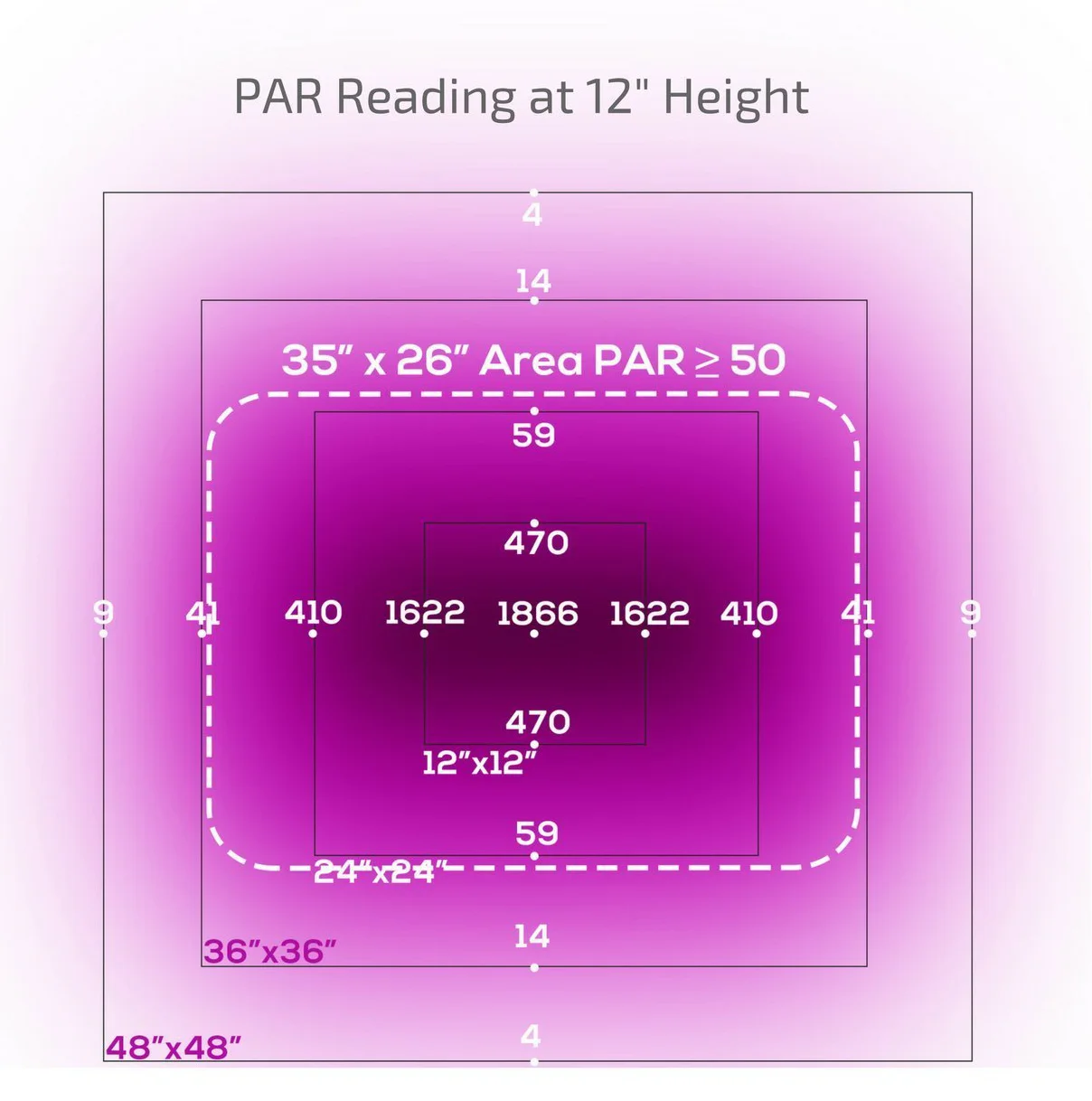
The above PAR chart shows a grow light that has a high amount of its light landing in the center of the grow space.
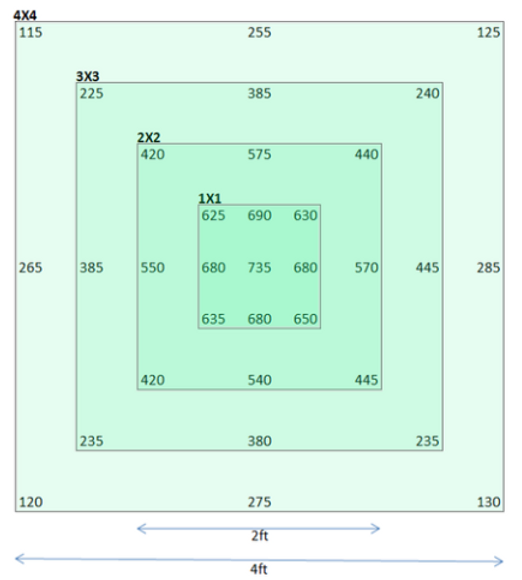
The above PAR chart shows a more even light spread compared to the PAR chart above it.
Just like the other things that we’ve covered in this article, if the grow light listing doesn’t show a PAR chart, be cautious!
Energy Consumption
Wattage (or watts) is a measure of energy consumption. New growers often mistake watts as a measure of the intensity that a LED grow light is producing. This is incorrect. When a LED grow light listing shows a number of watts (all grow light listings should), it is telling you how much energy the grow light is consuming. This directly relates to how much your electricity bill will be each month. The higher the watts, the higher your electricity bill will be. For most growers, the number of watts isn’t a big selling point. Instead, most growers are focused on buying a light with high PAR output and an even light spread.
The diodes on a grow light can certainly have a large impact on the fixture’s performance. The process to create and sort diodes is actually pretty interesting. Each diode made in a given production run will exhibit tiny variances from the others in its batch, despite the fact that they were all created with the same materials. For this reason, manufacturers sort newly created diodes through a classification process that groups together like diodes. This process is called binning. The criteria manufacturers use to bin their diodes are color wavelength and forward voltage. These two metrics measure the specific color profile and brightness levels of a given diode. Each diode manufacturer has their own binning process and “Top Bin” diodes are the best diodes out of the batch produced. The best diode manufacturers here in 2020 are CREE, OSRAM and Samsung. Many growers will only buy a LED grow light with diodes from those manufacturers since they are well-known for their exceptional quality.
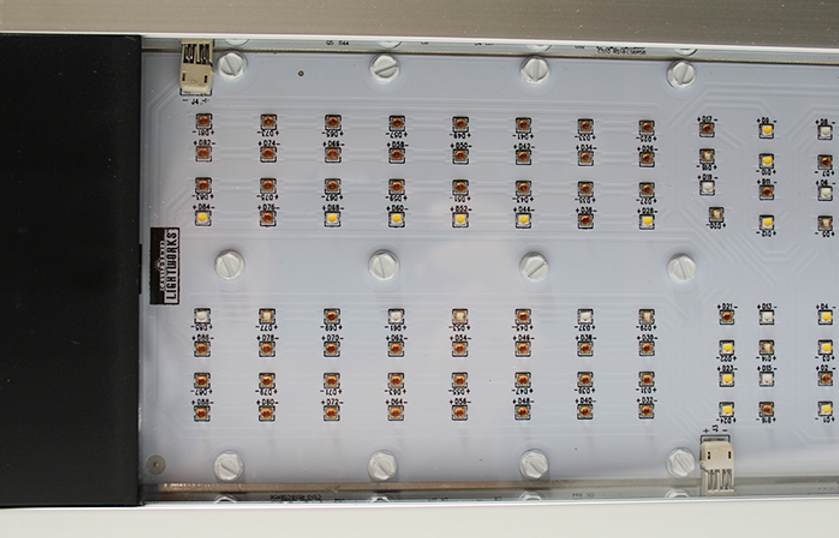
Diodes on a LED grow light
Other
A few other things to consider are drivers and warranty. A grow light with a low-quality driver could become faulty and have to be replaced. Therefore, many growers target ‘Mean Well’ drivers since they are a manufacturer well-known for their quality. I highly recommend you get a LED grow light with quality components so it will last you several years. For added protection, go with a LED grow light that has a long warranty. The best LED grow light manufacturers here in 2020 offer at minimum, a 3-year warranty. Some even offer a 5-year warranty. If the company offers a shorter warranty, such as a 1-year, consider buying a different grow light that offers you greater protection in case a defect were to occur.
Conclusion
There are many things to consider when purchasing a LED grow light. The coverage area and light distance will help narrow down your search results and ensure your grow space is appropriately covered. PAR output is measured in different ways and misinformation about intensity is very common. The light spectrum that the LED grow light emits is important since cannabis has different needs throughout its life. Also, an even light spread will help with growth across the entire plant. Wattage is often confused for light intensity instead of what it actually is – energy consumption. It’s better to go with high-quality diodes and efficient drivers from trusted manufacturers instead of going with unknown brands. Lastly, the warranty that the LED grow light has will offer you protection in case the light becomes defective. Considering these things prior to buying a LED grow light will help ensure your money is being well-spent.
![]()

